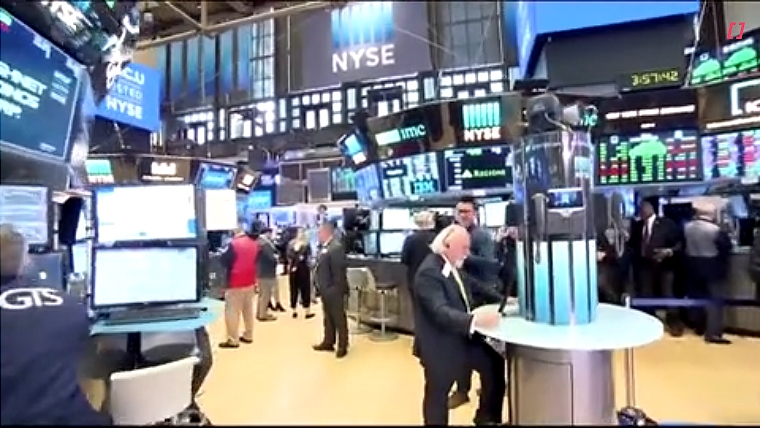
Focus was on the US CPI report overnight and a strong underbelly of inflation played to the higher for longer rates narrative, driving US rates and the USD much higher. The NZD and AUD performed poorly overnight, with the NZD languishing back down at 0.5930.
The US CPI rose 0.4% m/m and 3.7% y/y in September, one-tenth higher than expected, while the more important CPI ex food and energy measure was in line at 0.3% m/m and 4.1% y/y, a fresh two-year low. However, other core measures suggested a stickier inflation backdrop. The services component, excluding housing and energy, rose 0.6% m/m. The Cleveland Fed’s mean and trimmed mean measures and the Atlanta Fed’s sticky CPI measure all showed a pick-up in core inflation for the second consecutive month. Meanwhile initial jobless claims remained low, at 209k for last week, the indicator still not pointing to the required easing in labour market conditions to support a weaker inflation backdrop.
The data saw some reversal of recent market moves, with the market seeing a modestly increased chance that the Fed could still hike again – pricing through to December implying just over a 40% chance of a hike, up from 30%. Treasury yields jumped higher and are trading close to their highs for the day, with the 2-year rate up 8bps to 5.06% and the 10-year rate up 15bps to 4.71%. The curve steepening occurred after a poor tender of 30yr bonds, which were issued at nearly 4bps above the pre-tender yield. The 30-year rate is now up 18bps on the day to 4.87%.
UK GDP rose 0.2% m/m in August, as expected, but July was revised down one-tenth to minus 0.6%, while industrial production fell more than expected at 0.7% m/m. The data painted a picture of a struggling UK economy, with odds-on that the economy contracted in Q3 following GDP growth of just 0.1% in Q2. The data had little change on the policy outlook, with the market still thinking there’s a close to even chance of another 25bps hike by the BoE over coming months and UK gilt yields rose broadly in line with Treasuries ahead of the sell-off post the 30-year tender.
Developments in the Israel-Hamas war include diplomatic efforts to contain the conflict from spreading further in the Middle East by US Secretary of State Blinken’s visit to Israel and Saudi Arabia’s bin Salman talking to the Iranian President in a rare dialogue. Israel has been striking airports in Syria and bombing targets Gaza. Oil prices remain stable but in terms of energy prices, European gas prices continue to climb, with the benchmark contract up 15% to EUR53 per megawatt hour, taking the move for the week to 35%. The Israel-Hamas war exacerbated supply concerns as Israel cut gas exports to Egypt – this on top of the suspected sabotage of a Baltic Sea gas pipeline between Finland and Estonia and ongoing strikes by gas workers at Chevron’s LNG facility in Australia.
In currency markets, the DXY shot up after the US CPI report and has sustained that move, the DXY index now up 0.7% for the day. The NZD and AUD have seen the largest falls, down in the order of 1½% overnight to 0.5930 and 0.6315 respectively – the NZD’s foray above 0.60 proving brief and now back into the familiar range seen over the past couple of months. NZD/AUD is at 0.9390 after falling below 0.9355 last night. The NZD is lower on all the other crosses.
Against a broadly stronger USD, the yen has been the strongest of the rest, despite the backdrop of higher global rates, with USD/JPY up to “only” 149.80, with the 150 level deemed to be the current tolerance for Japan’s MoF before intervention risk remerges. GBP is down 1% and trading back below 1.22 while EUR hasn’t fallen quite as much and is at 1.0535.
The higher rates backdrop sees the S&P500 down for the first time this week, momentum dropping as we go to print and currently down 0.7%.
Global forces supported a fall in domestic rates yesterday alongside some curve flattening. The 2-year swap rate fell 1bp to 5.64% while the 10-year rate fell 6bps to 5.15%. NZGBs were down 2-6bps across the curve. Some market underperformance heading into the tender, with a concession built in, resulted in a decent tender, with good bid-cover and the weighted average yield at 3bps below prevailing mids for the 2051 bonds, which remain in good demand – investors seemingly not concerned about the political uncertainty and policy vacuum as we head into election. The Australian 10-year bond future is up 10bps in yield terms overnight, which will set the tone for early NZ trading.
NZ food price inflation fell to a 14-month low of 8.0% y/y, with leading indicators pointing to much more downside pressure to come, a welcome development to help bring down headline CPI inflation.
In the day ahead, the NZ manufacturing PMI and card spending data for September will be released, followed by China inflation and trade data. US consumer sentiment and inflation expectations data are released tonight. When markets open on Monday we might have an outline of how the next NZ government might look like after Saturday’s general election, but as for the policy outlook there will be no clarity for weeks or potentially months.

We welcome your comments below. If you are not already registered, please register to comment
Remember we welcome robust, respectful and insightful debate. We don't welcome abusive or defamatory comments and will de-register those repeatedly making such comments. Our current comment policy is here.